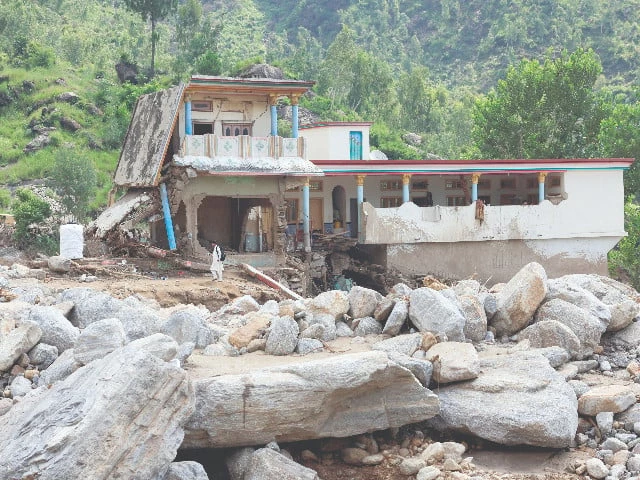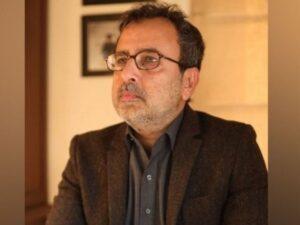Qadir Nagar:
Two days before his marriage, Noor Muhammad had a long telephone call with his mother, a few hours before devastating floods of Khyber-Pakhtunkhwa killed her with 23 family and relatives.
“I cannot explain how happy she was,” he said standing near the rubble of the large house with 36 bedrooms in his family, perched on the shore of a flood water channel in the village of Qadir Nagar.
The village of the mountainous district of Buner was the most affected by recent massive rains in the country, representing more than 200 deaths on nearly 400 in the floods in the northwest since August 15.
Buner is a three -hour and a half road from the capital Islamabad. “Everything was over,” sobbed Muhammad, 25, while mourning people were seated in his damaged house to offer condolences, saying that nothing left at home, except for rubble and heavy rocks, who swept the mountains as well as mud and flood waters that are raging, unleashed in houses, markets and buildings.
“The deluge came, a huge flood came, he swept everything away, at the house, the mother, the sister, my brother, my grandfather and children.”
Muhammad works as a worker in Malaysia. He arrived at Islamabad airport on August 15 to go home where his wedding preparations were beating their full two days later. Instead, he attended 24 funeral. They understood his mother, a brother and a sister, he said, adding that his father and another brother survived because they went to pick him up at the airport.
The rest of the deaths were among the families of his uncles who shared the house built by his grandfather and the relatives who attended his marriage. His fiancé survived. His house was far from the worst damage.
Sudden devastating floods
The sudden floods triggered by the worst of this year’s monsoon and clouds, which started in the northwest mountainous, spread to other parts of the country of 240 million, bringing death and large-scale destruction.
The authorities have said that the longer rainy spell and the rare cloud explosions were rooted in climate change due to global warming, fearing that intensity increases in the years to come.
“We and our elders have never seen a storm like this in our lives,” said Muhammad Zeb, 28, resident in Buner. It was a complete chaos and a massive disaster, he added. “You can see for yourself, it was a beautiful place with houses. But now, as you can see, the flood and the storm have swept everything away.”
An unknown number of people remain missing, the corpses still recovered, officials said. The overall number of death across the country during the monsoon rains that started at the end of June was 776, according to the National Disaster Management Authority, who said that more than 25,000 people had been saved in the North West.
The army and the Air Force joined the rescue and rescue efforts. The officials warned more storms with two other monsoon rain spells expected until September 10.
Buner received more than 150 mm (5.91 inches) of rain in an hour launched by an explosion of clouds in the most destructive event of this monsoon season. An explosion of clouds is a rare phenomenon where more than 100 mm (3.9 inches) of precipitation in an hour in a small area. Only four people of the 28 in his house survived, said Muhammad. “What can we say else? It is the will of God,” he said.




